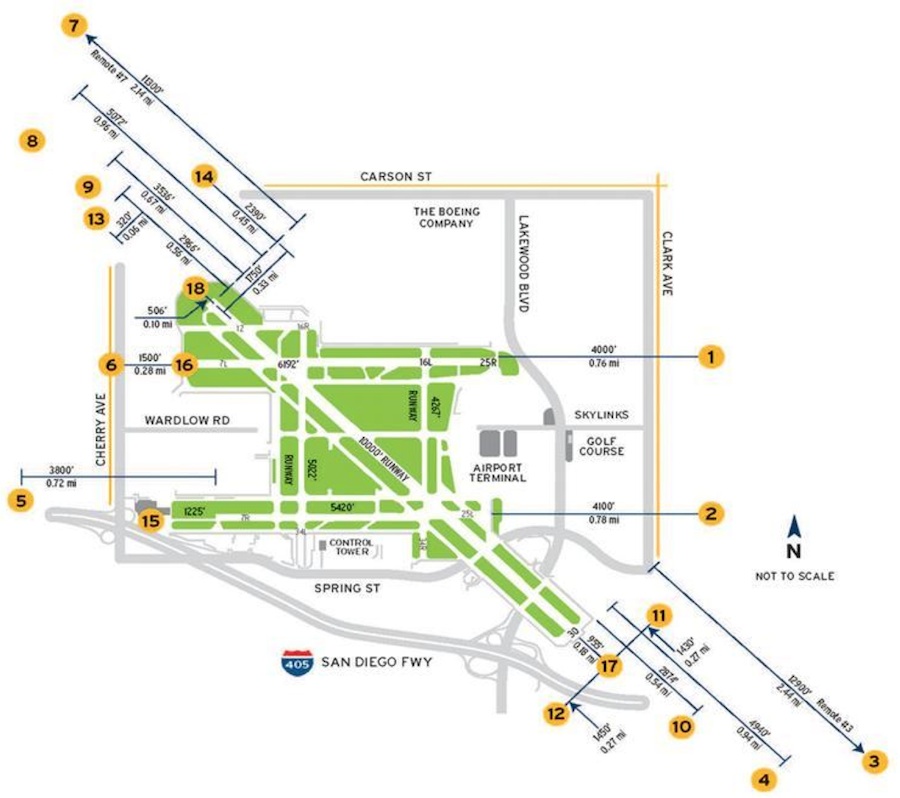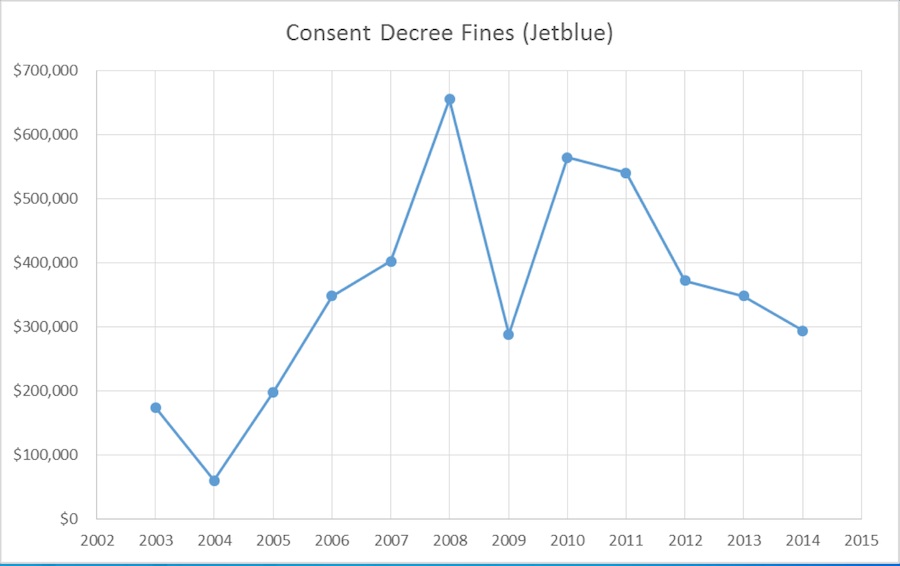A two hour study session held to analyze the current noise ordinance in effect at the Long Beach Airport (LGB) served as little more than a history lesson, as city council and residents discussed the merits of the noise ordinance and an overwhelming reluctance to modify it in the future.
Mayor Robert Garcia opened the session by addressing the attendees, asking them to refrain from bringing up the potential expansion of LGB to include a federal customs checkpoint and servicing international flights, as no current motion from any entity exists. However, Garcia didn’t take the possibility off the table, stating that a future proposal was possible.
“As soon, and if, we receive a request from JetBlue—and I think there’s some expectation that we’re going to get some type of request—that will be made public immediately so the council and the public are notified if there’s any movement on that side,” Garcia said. “I think that’s important for this conversation to be open and transparent.”
Garcia also apologized on behalf of the council for an error made in the posted job description during the search for the new airport director last year, which listed garnering support from the community for the customs checkpoint as a main objective.
“No one on this council was aware of that going on, certainly I never saw that and it never should’ve been there in the first place,” Garcia said.
Assistant City Attorney Michael Mais and City Prosecutor Doug Haubert navigated through a nearly 50 slides in a presentation which documented the litigious history of the city’s Airport Noise Compatibility Ordinance (ANCO), which has remained untouched since its adoption in 1995.
A large part of the reason that it has remained intact is the federal Airport Noise and Capacity Act (ANCA) of 1990, which was passed while ANCO was being processed by an appellate court in California. Long Beach was granted an exemption to keep their ordinance, which pre-dated the federal legislation, with the understanding that any amendments made to it could result in forfeiture of local airport noise governance.
Mais stated that ANCA has severely limited local municipalities’ abilities to manage airport noise in an attempt to do away with the “hodgepodge” of laws that existed to create more uniformity. Since its passage, very few municipal airports have been successful at challenging ANCA and passing local amendments, making Long Beach’s local ordinance both rare and powerful.
“Since that federal law was enacted in 1990, no other airport in the country has been successful in being able to impose these types of restrictions that we currently have at our airport with flight caps and curfews,” Mais said. “There are probably only about five or six airports that share what we have as far as being exempt from ANCA.”
Long Beach’s litigious trail to passing ANCO started in 1981and spanned over 12 years and some 1,600 lawsuits. The city watched the case bounce from local courts to federal courts, eventually landing in the State Supreme Court before a settlement was reached. All the while, the proposed cap on flights soared from 15 daily flights to the eventual mark adopted in 1995 of a minimum of 41 daily air carrier and 25 commuter flights. He concluded that the legal struggles and money invested in the ordinance aside, the protections it’s put in place for residents and the rare command it gives the city to enforce the ordinance are invaluable to Long Beach.
“I think it’s clear at this point that chapter 16.43 is a city asset, we fought for it very hard for a 12 year period of time, but not only time, expense.,” Mais said. “And due to the exemption that we were able to secure from ANCA, our ordinance is truly one of the most restrictive noise control ordinances in the country.”

Most of those restrictions pertain to time of day that most flights can operate, allowable decibel levels and potential fines if the ordinance is violated. Haubert, who has served on the Airport Advisory Commission, explained the ordinance also set decibel levels for Single Event Noise Exposure Levels (SENEL) and Community Noise Exposure Levels which refers to combined noise certain groups of aircraft (commuter, commercial, charter, etc.) and established administrative and criminal penalties.
The highest SENEL levels are reserved for the hours of 7AM to 10PM, with the high decibel allowance being 102.5 decibels when departing and 101.5 when landing. The airpot has a series of 18 sensors placed along the flight paths and runways to detect any potential violations. Although it is rare, flights can land between the hours of 11PM and 6AM but the allowable decibel levels drop to 79 decibels on both departure and takeoff, with any violation resulting in a written citation.
“Airport staff doesn’t go out on the tarmac and put tickets under the windshield wipers but there are violations that are given when there’s an event that violates the noise ordinance,” Haubert said.
The violation process starts with the written notice from the airport manager and is then passed off to a noise committee, which tries to correct the actions of offenders. Frequent violations can result in surcharges ranging from $100 to $300, which get paid back into the airport fund. The fines haven’t been adjusted for cost of living, so they’ve remained the same since the ordinance was written.
However, certain aircraft are exempt from the ordinance, including military jets that can be heard roaring into the airport, shaking windows and setting off car alarms. During the Memorial Day weekend last year, F/A 18 Hornets rattled the skies and homes surrounding the flight path for five days while they conducted exercises.
Although used “very, very sparingly”, the city also has avenues to file criminal complaints against offenders, which could result in fines of $1,000 and up to six months in jail. That option has only been exercised a handful of times in the past, most notably with JetBlue, an LGB tenant for the past 14 years.
In fact, the airport has entered into a revolving Consent Decree that installed a escalating fine system in place of having to file and prosecute criminal actions against the airline. The first six violations of a given quarter are charged at $3,000 each, with every violation above six costing JetBlue $6,000, all of which goes toward supporting city libraries. The company, which is on pace to owe around $300,000 in fines for 2014, hit a peak in 2008 when its fines nearly reached $700,000. In total, JetBlue has paid over $4 million in fines since 2003, when the decree was put in place.

Whether they’re paid for or not, the noise violations and the environmental impacts of the airport and the potential move to allow it to expand and provide international services were the focal points of public comment. Third District resident Terry Jensen pointed at inconsistencies among prior councils wavering on their word as to why residents become so worried when the ordinance is brought up, adding that the council was elected to serve the people, not a business.
“Five out of the nine council districts are affected by departing and landing aircrafts, including my third district,” Jensen said. “You represent the people that live in the neighborhoods, you don’t represent the airport. You represent the residents of Long Beach.”
Former 8th District Councilwoman Rae Gabelich continued that narrative, stating that the city has already spent too much money over the past four decades going to trial over the airport. Before re-addressing the council, she stopped and asked those in attendance to stand if they supported the ordinance the way it is and was met by nearly the entire room rising to their feet.
“You’re all here to do a job because you love your city,” she said to the council. “But in 2004, two council members lost their second term for reelection because they couldn’t carry the water for the rest of the community that was so concerned about maximizing our airport. You’re elected to anticipate and protect the needs of your community and your constituents and I ask that you remember that.”
Robert Land, Senior Vice President of Government Affairs and Associate General Council for JetBlue spoke of the company’s commitment early on to Long Beach, and its dedication to being a good corporate citizen of the city. The building of the new terminal that replaced the “temporary” bungalows that existed for over a decade not only beautified the airport, but it improved the airline’s ability to fly its complete allotment of flights, which has helped the city economically.
“The city has seen great benefit including increased tax revenue, jobs, commerce, tourism and obviously a more vibrant airport,” Rand said.
Bryant Francis, the new Long Beach Airport Director was on hand at the study session but left much of the talking to Haubert and Mais. When reached earlier in the day and asked about the noise ordinance and any potential plans on deck to change it, a representative from Francis’ office said that it’s “important that the city to protect the ordinance” and with LGB being a municipal airport, “it wants to protect it, too.”
The 92-year-old airport was designated a historic landmark in 1990 and serves nearly 3 million people annually, playing host to over 325,000 landings and takeoffs each year. It supports 180 businesses in and around its premises, which totals nearly 18,000 jobs.
The entire council seemed to agree on two things; the airport is an important part of the city’s economy, but also that the noise ordinance is a vital component to uphold the standard of living for those that neighbor its runways and live under its flightpaths.
Current 8th District Councilman Al Austin, was one of three council members who called for this study session in response to the gaff during the search for the new airport director late last year. Austin clarified that, like other council members, he is fond of the airport, uses it frequently and even brags about it to people from out of town. However, his position on the matter and his loyalties lie with his district and the people in it.
Reiterating the theme that the noise ordinance is an asset to the city, Austin said if the council does face a proposal from JetBlue in the future to go forward with plans for a federal customs checkpoint, the city should proceed very cautiously, if at all.
“Everyone here supports our noise ordinance, right?” Austin asked. “Our airport is an asset as well. It helps market our city, there’s economic development opportunity there at the airport and around the airport property. But our neighborhoods define our city and we need to be very clear on that.”

